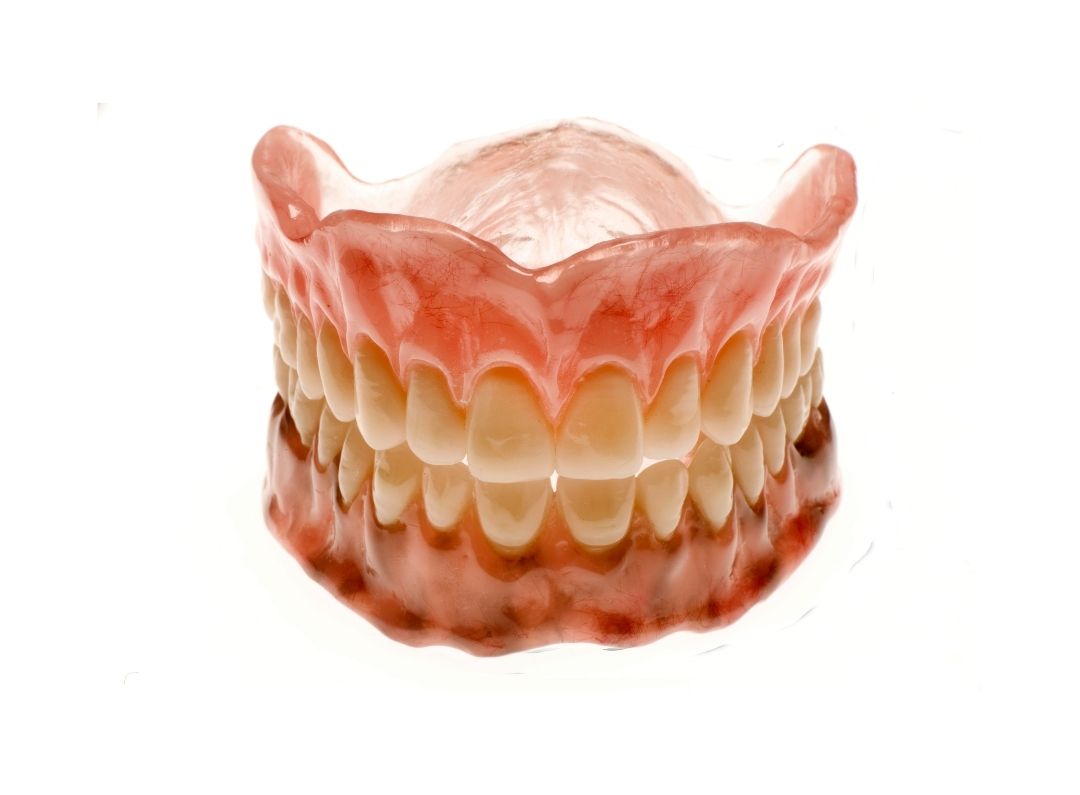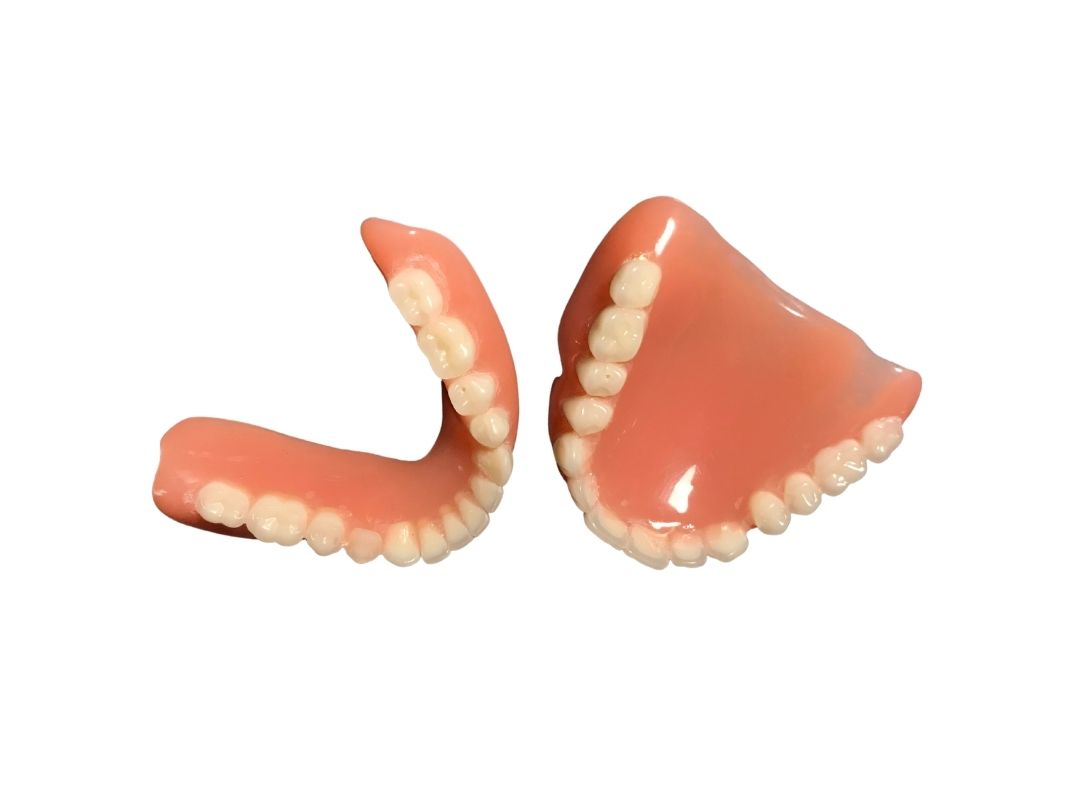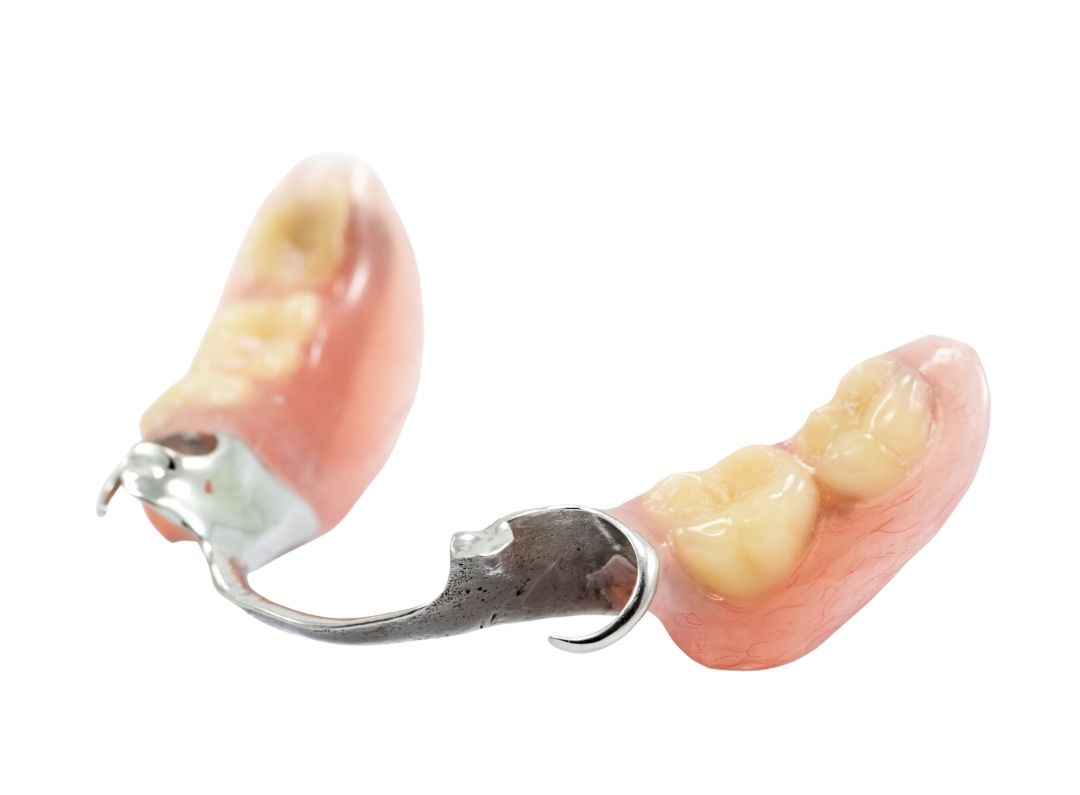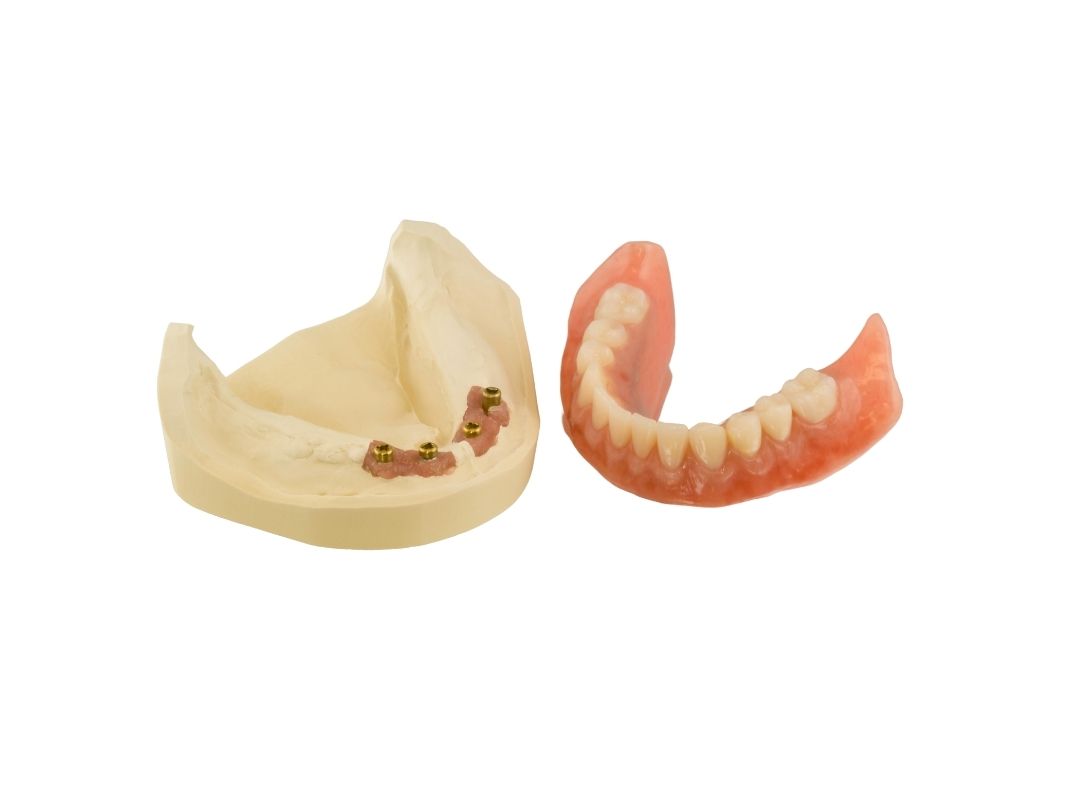In cases when it is not possible to make fixed replacements, dentures are considered to be a satisfactory solution that enables chewing, and speaking and helps retain the natural facial physiognomy.
They consist of a base with artificial teeth, most often plastic or ceramic.
The base is the part of the dentures that adheres to the mucous membrane and is most often made of pink acrylate to match the color of the surrounding mucosa, or a combination of acrylate and light metal alloys, known as Wironit.
The base of the dentures enables the distribution of masticatory forces on the mucous membrane and bone base, which is why it is important that the surface of the base be as large as possible in order to distribute the masticatory forces over a larger area, thus achieving a more stable and pleasant biting experience.
Book an appointment for a free examination by calling 01 2304 789 and join our many satisfied patients.
Complete dentures:
They are made for the upper and lower jaw respectively, in situations when all the natural teeth of the jaw are missing.
The upper base covers the entire palate, and the lower base has a horseshoe shape, leaving space for the tongue. When chewing, the dentures must remain stationary, and the denture-bearing area must have a good shape with enough remaining bone.
Partial dentures:
They are made when there is a certain number of natural teeth in the jaw that can hold dentures.
The remaining teeth must be repaired for the purpose of attaching a partial denture to them in order to make it more stable during chewing and speaking, and thus more comfortable to wear.
With partial dentures, the load that occurs during chewing is transferred to the other teeth, which relieves the mucous membrane that cannot bear large loads.
Dentures on implants:
Dentures on implants are dentures that are attached to implants 3 to 6 months after their installation. In order to achieve maximum functionality and stability, it is necessary to install a minimum of two to four implants in one jaw.
The dentures can be attached to the implants in two ways, depending on the indications and the individual case. The first method of attachment is through locator implants, small anchors that connect to the dentures. It is recommended for patients with reduced interjaw relations. Another way of connecting the dentures to the implants is through a metal bar. A metal bar enables greater retention as it covers a larger surface, but maintaining oral hygiene requires a little more effort.
Advantages of dentures on implants:
- No palate in the upper denture
- Better stability, no need to use glue
- Easier maintenance of oral hygiene
- Better cost-effectiveness than fixed structures on implants
Dentures must be removed and washed at least once a day and disinfected with appropriate solutions. They should be washed after every meal and especially before going to bed.
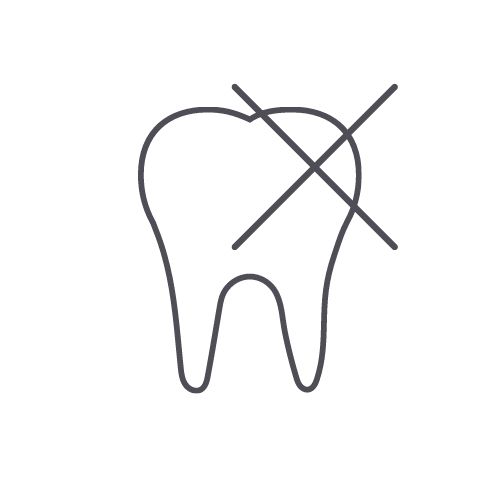
Loss of teeth
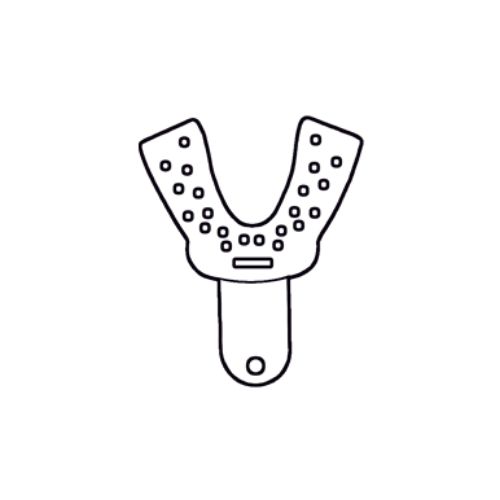
Impression

7-14 days







